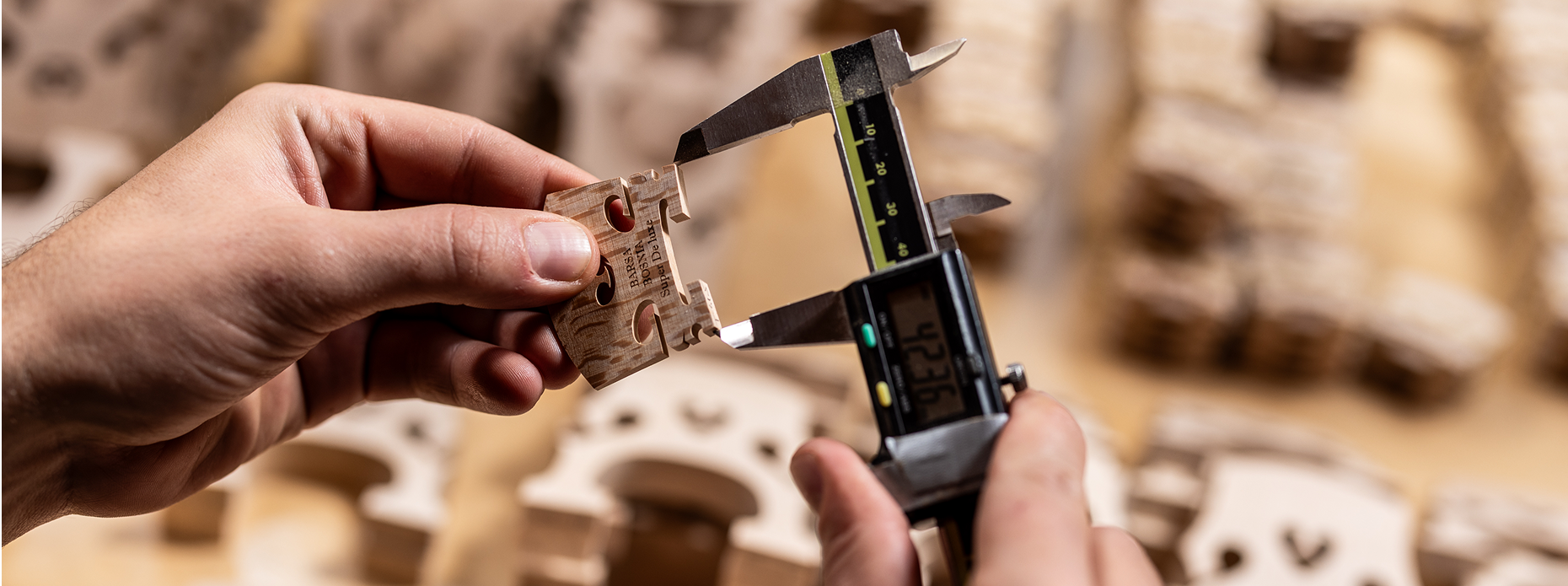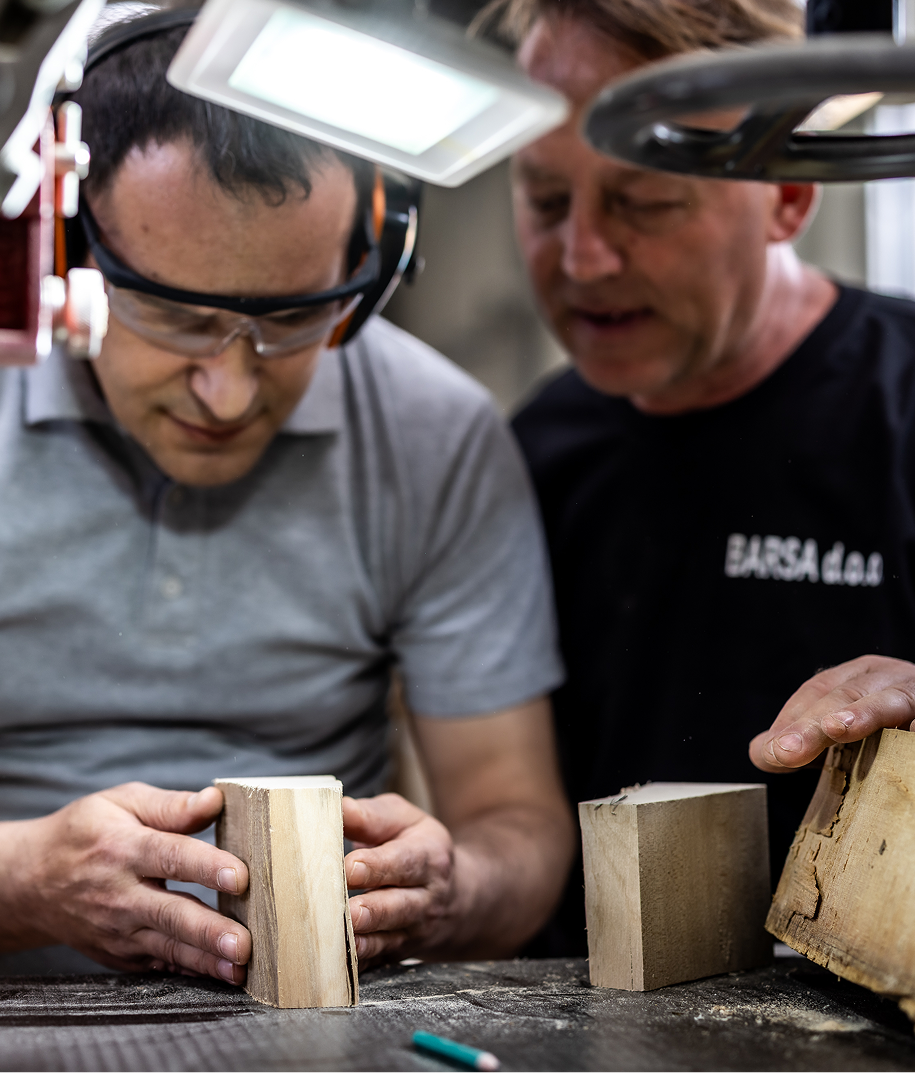From forest to tone.
a process that preserves sound.

From forest to tone. a process that preserves sound.


OUR PROCESS
01
Selecting the right wood
Everything begins in the forest. Our experts have spent decades selecting only the finest Bosnian maple, with tight grain lines, healthy growth, and perfect acoustic balance. Every tree is a potential note—so we choose carefully.
02
Time is an ally
After harvesting, the wood is air-dried naturally, without accelerating the process. This period can last up to ten years, depending on thickness, humidity, and final purpose. Natural drying ensures stability, tonal clarity, and longevity.
03
Handcrafted with precision
Once matured, the wood enters our workshop. There, every piece is cut, shaped, and refined by hand, tailored for the needs of each instrument (violin, viola, cello, double bass). Our approach is precise, but never mechanical – because each piece of maple “speaks” differently.
04
The final test – sound
The last stage is visual and tonal inspection. We test vibration, elasticity, balance – and most importantly: resonance. Only bridges that meet all criteria leave our workshop with the Barsa name.
OUR PROCESS
01
Selecting the right wood
Everything begins in the forest. Our experts have spent decades selecting only the finest Bosnian maple, with tight grain lines, healthy growth, and perfect acoustic balance. Every tree is a potential note—so we choose carefully.
02
Time is an ally
After harvesting, the wood is air-dried naturally, without accelerating the process. This period can last up to ten years, depending on thickness, humidity, and final purpose. Natural drying ensures stability, tonal clarity, and longevity.
03
Handcrafted with precision
Once matured, the wood enters our workshop. There, every piece is cut, shaped, and refined by hand, tailored for the needs of each instrument (violin, viola, cello, double bass). Our approach is precise, but never mechanical – because each piece of maple “speaks” differently.
04
The final test – sound
The last stage is visual and tonal inspection. We test vibration, elasticity, balance – and most importantly: resonance. Only bridges that meet all criteria leave our workshop with the Barsa name.

